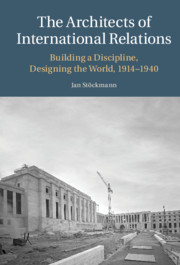Book contents
- The Architects of International Relations
- The Architects of International Relations
- Copyright page
- Dedication
- Contents
- Acknowledgements
- Archival Sources
- Abbreviations
- Introduction
- 1 Wartime Origins
- 2 Genesis of a Discipline
- 3 Peace in the Minds of Men and Women
- 4 Professors as Diplomats
- 5 Testing Collective Security
- 6 The End of World Affairs
- Conclusion
- Index
3 - Peace in the Minds of Men and Women
Published online by Cambridge University Press: 24 February 2022
- The Architects of International Relations
- The Architects of International Relations
- Copyright page
- Dedication
- Contents
- Acknowledgements
- Archival Sources
- Abbreviations
- Introduction
- 1 Wartime Origins
- 2 Genesis of a Discipline
- 3 Peace in the Minds of Men and Women
- 4 Professors as Diplomats
- 5 Testing Collective Security
- 6 The End of World Affairs
- Conclusion
- Index
Summary
This chapter explores the relationship between intellectual cooperation and the formation of International Relations (IR) scholarship. It begins by briefly chronicling the idea of intellectual cooperation. The second section traces the origins of the International Committee on Intellectual Cooperation (ICIC) in Geneva, while the third one deals with the International Institute of Intellectual Cooperation (IIIC) and its activities in Paris. The next section demonstrates how their projects became politicised, particularly those in the field of IR. Finally, the last section discusses the universalist motives of inter-war intellectual cooperation and contrasts these ambitions with the political realities of the 1930s. The chapter concludes that IR benefitted enormously from the League of Nations but, at the same time, suffered from its political context and ultimately fell prey to the kind of aggressive foreign policy it set out to prevent.
- Type
- Chapter
- Information
- The Architects of International RelationsBuilding a Discipline, Designing the World, 1914-1940, pp. 119 - 160Publisher: Cambridge University PressPrint publication year: 2022

